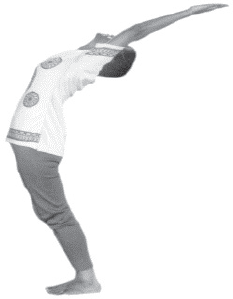
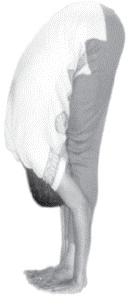
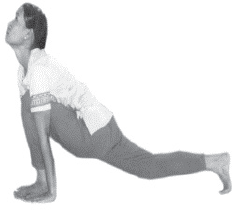
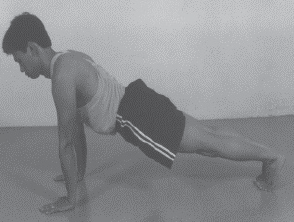
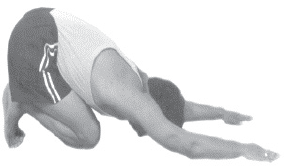
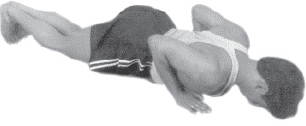
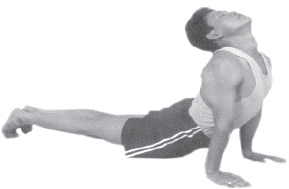
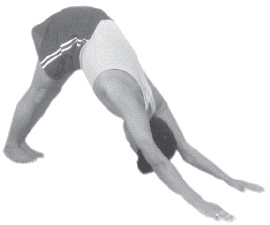
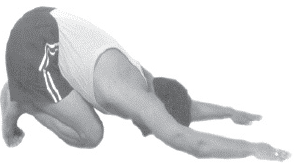
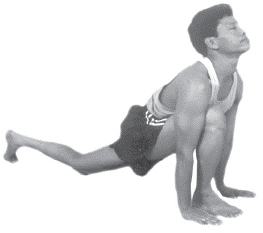
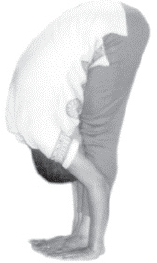
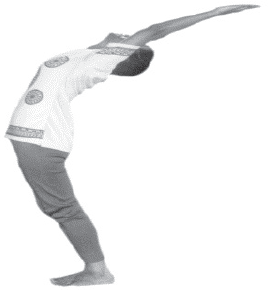
Integrative Medicine Case Reports, Volume 4, Issue 1 (January), 2023
Influence of integrative medicine on grade 2 obesity: a single case report
KEY WORDS |
ABSTRACT |
|
Obesity
|
This present study is about the case of obesity (Grade 2) who had visited Arogyadhama (SVYASA University, Bangalore). The patient's motive was to reduce body weight. After consistent yoga practices, naturopathy treatments and acupuncture for over a period of three months we observed a significant reduction in her body weight. With sustained treatments and adoption of said techniques, the quality of the patient's lifestyle is improved accompanied by improvement in, immunity, mobility and muscular strength. The presented case study examines the application of Integrative Approach of yoga and naturopathy practices for the enhancement and maintenance of the said patient's health profile. doi: 10.38205/imcr.040118 |
|
*Corresponding Author:
|
Introduction
The current increase in the cases of obesity witnessed worldwide has sparked the argument that obesity as in prevalence is more of a disease than being just a medical condition or risk factor for other diseases. Obesity is a multifaceted aetiological disease which has its own pathophysiology and co morbidities (1).
Body Mass Index (BMI) is a key marker for identifying obesity, and individuals with a BMI of 30 or higher are considered obese. Over the last three decades, the prevalence of obesity has skyrocketed, reaching 27.5% for adults and 47.1% for children worldwide. The long-term impacts of the factors of genetic, social, and cultural well-being are primarily what lead to obesity. Other factors include individualised lifestyle choices, individualised purchasing patterns, and varying urban expansion.
According to a report from May 2021, India’s population is rapidly transitioning from being underweight to being overweight or obese. Statistics show that the prevalence of obesity is 40.3% in India. The study found that obesity was more common in women than men (41.88% vs. 38.67%), in urban areas than in rural ones (44.17% vs. 36.08%), and in those over 40 than in those under 40. (45.81% as opposed to 34.58%) Higher levels of education were associated with both increased obesity (44.6% in college vs. 38% in the ignorant) and lower levels of physical activity (43.71% inactive vs 32.56% vigorously active) (2).
Yoga in this post-modern era poses to be the best key to unlocking the superiority of our cultural practices in treating various lifestyle related medical conditions. The design of every yoga instruction maps the constraints of space and time marrying modern practices with the intelligence of our well-versed ancestors. Yoga provides a holistic approach in practices incorporating the benefits of cardio, dynamic workout and meditative posture effusing positive influence on one’s behaviour and lifestyle.
In the book hatha yoga pradipika by swathmarama it is advised that one should eat half the stomach, fill a quarter with water and leave the rest empty. This will keep our senses in harmony and ensures withstanding serenity in our body, mind and the soul (3). As per Yogavasistha, diseases are of two types, Adhijavyadhi or Anadhijavyadhi. AdhijaVyadhi is explained as the diseases caused by stress i.e., stress is caused due to turbulence in our psychology and mental peace. Obesity is also widely believed to be a result of this mental agony. Therefore, to treat people with obesity caused due to mental turbulence yoga can be an effective tool as clear methods of treatment for adhijavyadhi is prescribed in Yogavasistha.
Regular practices of prescribed asana, pranayama, kriya also with naturopathy modalities and acupuncture helps in leading a holistic life style. However, no study yet has reported the effect of an integrative medicine protocol among the obese patient. The current case study is an attempt to highlight the efficacy of the same in the desired population.
Case history
A Miss XXX, a 23-year-old female patient, complained of being overweight when she went to an integrative medicine inpatient hospital at Bangalore. She is a known case of hypothyroidism for five years. She got accepted into the Department of Metabolic Diseases and Endocrinology at the Holistic Health Center. She was first given a customised, two-week treatment based on integrative medicine. Her medical situation was discussed with a panel of specialists from several fields, including yoga, acupuncture, physiotherapy, naturopathy, etc.
For about two weeks, an integrated protocol of yoga sessions twice a day, nutritional counselling regarding dietary modifications and a specific dietary protocol, individualised naturopathic treatment schedule, and acupuncture was planned. At the end of the two weeks, the patient decided to continue her course for another two months duration. Her weight gradually decreased as she became more consistent with her treatment. Tables 1–4 show detailed interventions over time. After obtaining a thorough medical history, an initial consultation, and a signed Declaration of Consent, intervention was carried out.
Intervention
An integrative medicine protocol was planned after a complete evaluation of the patient. A calorie restricted diet, mud therapy, manipulative therapy, acupuncture and reflexology were administered based on the patient’s response after evaluation by doctor’s during their daily observation, the therapies were changed. An integrated yoga programme with asanas, pranayama, meditation, relaxation techniques, kriyas, educational lectures and yoga-based counseling sessions was created in light of the fact that the mind and body plays an important role in the pathophysiology of the disease. The following interventions were followed for 3 months.
• Yoga therapy as cited in TABLE 1.
• Dietary protocol as cited in TABLE 2.
• Naturopathy treatments as cited in TABLE 3.
• Acupuncture as cited in TABLE 4.
Table 1: IAYT (Integrated Approach Yoga Therapy) Protocol (2) (3) (4) was followed as per Table 1 (4) (5) (6).
| Practice | Number of counts of procedure | Frequency | Duration of intervention | |
| 1. | Breathing awareness | 2 mins | Twice a day | 3 months |
| 2. | Loosening of wrist | 10 counts | Twice a day | 3 months |
| 3. | Loosening of fingers | 10 counts | Twice a day | 3 months |
| 4. | Loosening of elbow | 10 counts | Twice a day | 3 months |
| 5. | Side bending | 10 counts | Twice a day | 3 months |
| 6. | Shoulder Rotation | 10 counts | Twice a day | 3 months |
| 7. | Alternate shoulder rotation | 10 counts | Twice a day | 3 months |
| 8. | Spinal Twisting | 10 counts | Twice a day | 3 months |
| 9. | Neck movement | 8 counts | Twice a day | 3 months |
| 10. | Loosening of toe and ankle | 10 counts | Twice a day | 3 months |
| 11. | ArdhakatiChakrasana | 8 counts | Twice a day | 3 months |
| 12. | Sideward bending | 10 counts | Twice a day | 3 months |
| 13. | Spinal twist | 10 counts | Twice a day | 3 months |
| 14. | Hip stretch | 10 counts | Twice a day | 3 months |
| 15. | Butterfly | 10 counts | Twice a day | 3 months |
| 16. | Chakichalana | 10 counts | Twice a day | 3 months |
| 17. | Alternate leg raising | 10 counts | Twice a day | 3 months |
| 18. | Side leg raising | 10 counts | Twice a day | 3 months |
| 19. | Cycling | 10 counts | Twice a day | 3 months |
| 20. | Pavanamuktasana variations | 8 counts | Twice a day | 3 months |
| 21. | Lumber stretch | 8 counts | Twice a day | 3 months |
| Surya namaskara | Number of rounds of procedure | Frequency | Duration of intervention |
| 6 Rounds | Twice a day | 3 months | |
| Ardhachkrasana Step-1 |  |
Padahastasana Step-2 |  |
| Eka Pada Aswasanchlana Step-3 |  |
Chaturadandasan Step-4 |  |
| Sasankasana Step-5 |  |
Astangasana Step-6 |  |
| Bhujangasana Step-7 |  |
Parvatasana Step-8 |  |
| Sasankasana Step-9 |  |
Aswasanchlana Step-10 |  |
| Padahastasana Step-11 |  |
Ardhachkrasana Step-12 |  |
| Pranayama (6) (4) | No of rounds of procedure | Frequency | Duration of intervention |
| Nadishuddhi | 9 Rounds for each nostril | Twice a day | 3 months |
| Brahmari | 9 Rounds | Twice a day | 3 months |
| Bhastrika | 5 Rounds | Twice a day | 3 months |
| Kapalabhati | 3 Rounds | Twice a day | 3 months |
The role of dietary management is
• To help in the reduction of weight for the participant.
• To bring in a healthy eating pattern.
• Maintaining the calorie intake.
• Increasing the nutritional capacity.
• Improving the metabolism.
Table 2: DIET Protocol (7) (4) was followed as per Table 2 (9) (6).
| 8.00 am | 10.00 am | 1.00 pm | 5.00 pm | 7.30 pm | |
| 1st week | Normal diet | Juice | Normal diet | Barleywater, soup | Fruits |
| 2nd week | Normal diet | Juice | Normal diet | Barley water, soup | Fruits |
| 3rd week | Normal diet | Juice | Normal diet | Barleywater, soup | Fruits |
| 4th week | Normal diet | Juice | Normal diet | Barleywater, soup | Fruits |
| 5th week | Fruits | Juice | Fruits | Barley water, soup | Fruits |
| 6th week | Juice | Juice | Juice | Juice | Fruits |
| 7th week | Juice | Juice | Juice | Juice | Juice |
| 8th week | Juice | Juice | Juice | Juice | Juice |
| 9th week | Fruit | Fruit | Fruit | Barley water, soup | Fruit |
| 10th week | Juice | Juice | Juice | Barley water | Juice |
| 11th week | Juice | Juice | Juice | Barley water | Juice |
| 12th week | Fruit | Fruit | Fruit | Barley water, soup | Fruit |
Normal Diet: khichdi, brown rice, boiled vegetables, chapathi, dhal.
Juice: Lemon honey, ash gourd, sprouts, carrot, bitter gourd, cucumber, beetroot, watermelon, papaya, sprouts, barley water.
Fruit: watermelon, pineapple, papaya.
• The treatment protocol designed was focused on the participants self healing.
• To treat the person as a whole.
• To avoid abnormal accumulation of morbid matter.
• To maintain the vitality of the individual.
Table 3: The treatment protocol was followed as per Table 3 (10)(11).
| Naturopathy | 7.00 am | 12.00 pm |
| Mud pack to eye and abdomen. | Cold hip bath | |
| Mud pack to eye and abdomen. | Cold immersion bath | |
| Mud pack to eye and abdomen. | Oil application to whole body + Sauna bath | |
| Mud pack to eye and abdomen. | Full mud bath + Steam | |
| Mud pack to eye and abdomen. | Vibro massage to the whole body | |
| Mud pack to eye and abdomen. | Neutral under water massage |
• Acupuncture is believed to have its involvement in neuroendocrine axis regulation which inturn has its effects on the satiety center.
• It is reported to reduce the excitation at the lateral hypothalamic area which is the important neuroregulator in triggering ingestion.
Table 4: Acupuncture protocol (10) was followed as per Table 4.
| Meridian | Points |
| Conceptional vessel | CV 6, CV12 |
| Spleen | Sp 6, Sp 8, Sp 9, Sp 10, Sp 14, Sp 15 |
| Pericardium | P 6 |
| Stomach | St 21, St 25, St 29, St 36, |
| Heart | H 7 |
| Gall bladder | GB 21, GB 24 |
As an add on to the integrative method management, to deal with local aches and pain during the intervention and to regulate the circulation of vital energy, the therapeutic principle of simple obesity is invigorating the spleen to remove dampness and relieving Qi stagnancy in the liver to remove blood stasis, according to TCM theory hence acupuncture was being advised. The post symptom checklist was completed after 3 months shown in Table 5.
A decrease in the BMI and circumference was seen when pre and post intervention data were compared, highlighting the differences. After three months, a semi-structured interview was also conducted, and the results showed that the patient was happy with the therapy because her weight had decreased. She also reported a quicker return to her regular work schedule and an enhanced quality of life.
Table 5: Vital parameters
| Parameters | Pre-intervention | Post-intervention |
| Pulse rate | 80 bpm | 82 bpm |
| Blood pressure | 118/80 mmhg | 120/80 mmhg |
| Respiratory rate | 20 cpm | 16 cpm |
| Bhramari time | 8 secs | 16 secs |
| Weight | 101 kg | 86 kg |
| BMI | 39 | 33 |
| Waist circumference | 108 cm | 96 cm |
| Hip circumference | 126 cm | 108 cm |
| Mid arm circumference | 42 cm | 38 cm |
Discussion
The female patient showed recovery after three months of IAYT (integrated approach of yoga therapy) naturopathy treatment and was able to continue living a healthy lifestyle. She practised yoga, pranayama, cleaning techniques, meditation, relaxation techniques, and she adhered to a naturopathic diet that helped her lose weight when she was at Prashanti Kuteram. The participant’s overall treatment and mind-body approach through yoga practises may have helped to control the gut-brain axis, improve their digestive system, lower their stress level, and maintain a better quality of life.
Conclusion
The patient’s weight has been predicted to rise for a very long time. The main factor is lack of physical activity and a sedentary lifestyle. The anthropometric measurements have shown that the patient is grade 2 obese person, During the stay the participant received integrative treatment. Our research demonstrates the value and importance of administering naturopathic treatment and simplified yoga intervention as a secure and successful therapy for obese people.
Acknowledgement
I first offer my salutations and thank the almighty from the bottom of my heart. Additionally, I would like to thank Dr. Nibedita who was instrumental in the success of this project. I would like to thank Dr. Nagarathna, Dr. Amit singh and Dr. Reshma provided the inspiration for my effort and whose advice and encouragement have strengthened my resolve to pursue this course of study. I am grateful to the section therapist Mr. kiriti for his direction and enabling me to offer therapy. I thank my gurus for their blessings and extend my greetings to all my professors and my parents.
Authors’ contribution
TS has written the article; KSN and RPJ guided to write the article and execution of treatment; KBG Execution of Yoga practices; AS and NR advised and guided in treatment planning.
Limitations
– The changes of the individual has not been followed up after the duration of intervention.
– As the study is focusing on a single case it is difficult to generalise the results.
Informed consent
Yes.
Source of funding
None.
Conflict of interest
None.
Received Date: 28-09-22; Revised Date: 11-01-23
Accepted Date: 12-01-23
Reference
1. Swinburn BA, Sacks G, Hall KD, McPherson K, Finegood DT, Moodie ML, Gortmaker SL. The global obesity pandemic: shaped by global drivers and local environments. The Lancet. 2011 Aug 27;378(9793):804-14.
2. Jia W. Obesity in China: its characteristics, diagnostic criteria, and implications. Frontiers of medicine. 2015 Jun;9(2):129-33.
3. Swami Muktibodhananda. Hata Yoga Pradipika. Bihar,India: Bihar school of Yoga, Yoga publication trust; 1999.
4. Mazur A, Matusik P, Revert K, Nyankovskyy S, Socha P, Binkowska-Bury M, Grzegorczyk J, Caroli M, Hassink S, Telega G, Malecka-Tendera E. Childhood obesity: knowledge, attitudes, and practices of European pediatric care providers. Pediatrics. 2013 Jul;132(1):e100-8.
5. Dushyant S, Padmini T, Ganpat TS, Ramarao NH. An innovative approach in health sciences: Yoga for obesity. Archives of Medicine and Health Sciences. 2015 Jan 1;3(1):162.
6. Jogdand RP, Singh A, Nagratna R. Integrated approach of yoga therapy towards morbid obesity: A case report. Integrative Medicine Case Reports. 2020;1(1):39.
7. Nautiyal R. Effect of Surya Namaskar on weight loss in obese persons. Int. J. sci. and consciousness. 2016;2(1):1-5.
8. PA B. Effects of yoga-pranayama practices on metabolic parameters and anthropometry in type 2 diabetes. International Multidisciplinary Research Journal. 2011 Oct 10;1(10).
9. Seo DY, Lee S, Figueroa A, Kim HK, Baek YH, Kwak YS, Kim N, Choi TH, Rhee BD, Ko KS, Park BJ. Yoga training improves metabolic parameters in obese boys. The Korean Journal of Physiology & Pharmacology. 2012 Jun 1;16(3):175-80.
10. Satyalaksmi PK. Clinical Naturopathy-Yoga. 2nd ed. Prof. Satyalakshmi (NIN, Pune), Dr Pradeep DH, editor. Pune, Maharastra: NIN Pune, Maharastra; 2014.